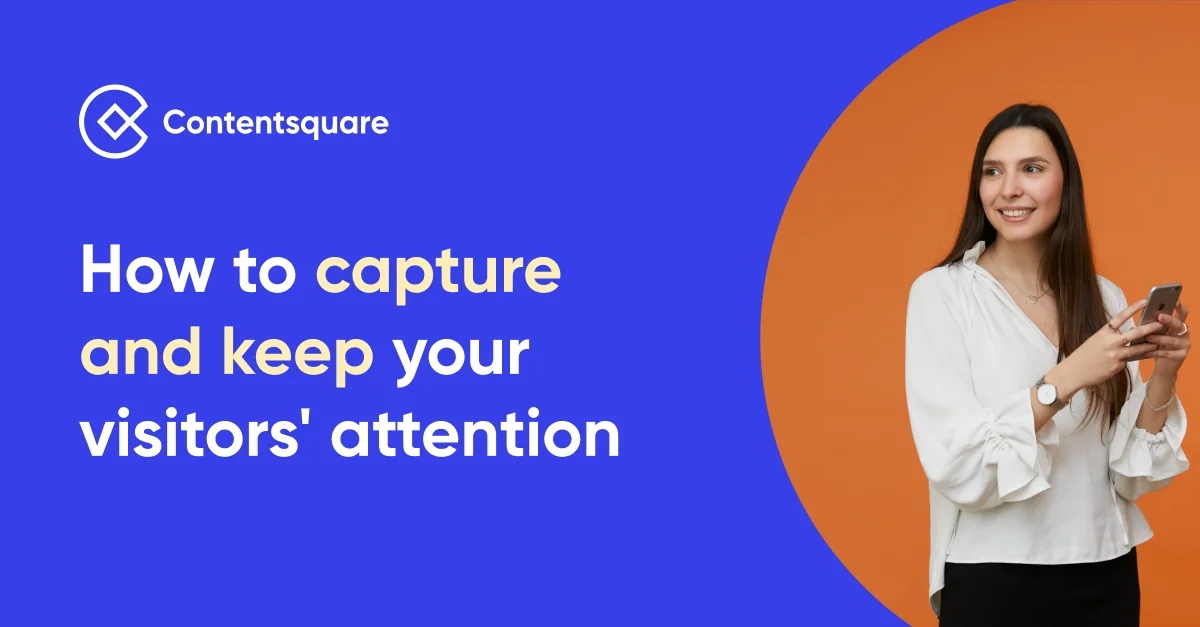Drinking Our Own Champagne: How The Contentsquare Analytics Platform Informed The Design of Our New Website

It’s not a coincidence that we called our re-platforming effort “Project Champagne.” Yes, we’re a French company, so it fits. But also, “Drinking your own champagne” is a saying coined by Pegasystems’ CIO that refers to a company using its own product or services to essentially practice what they preach.
As Contentsquare emerged as the leader in our industry and a major player in the SaaS space, we needed a website that would directly address four key success criteria:
- Tell the Contentsquare brand story
- Communicate Contentsquare’s industry leadership
- Engage quality leads for potential customers
- Create functionality that allowed for future scalability
In this article, I’m going to outline the approach we took, some of the key decisions that we made along the way, and some early results we’ve seen so far.
The Approach:
One of the first things I did coming into my role at Contentsquare was to pull together a large group of stakeholders to audit the last website and build a project plan. A surefire way to avoid future mistakes and oversights is to learn from past ones. Once we collected all of that feedback, we used it to create a highly detailed Request for Proposal (RFP) that outlined exactly what would determine success for this project.
We only sent this RFP to select agencies that both had experience building B2B websites in our industry and came with personal recommendations from our professional networks. The agency we selected to partner with was KPS3.
The first thing the KPS3 team did was get to know our product and people, understand the competitive landscape, learn about our current customers, and figure out how the current site was being used. They also asked us at length about the future vision for Contentsquare. This stage of the process broke down into three steps:
- To inform the strategy for the Contentsquare website redesign, KPS3 conducted stakeholder interviews with employees across different departments and positions, as well as interviews with customers.
- We conducted a digital audit, using data from both our product and others like Google Analytics, as well as a deep dive into our CRM data to get a better sense of our buyers.
- Competitive research was also conducted so we could audit our global competitors’ websites, messaging & positioning, as well as their marketing strategies.
With all that complete the trajectory was clear; we needed to put the voice of the customer on display and let it speak for us. We can say how great we think we are all day, but it carries a lot more impact coming from the 700+ customers who are paying to use our platform. You can see this throughout the new site, starting with the top of our homepage.
We built out the information architecture using what we had learned in discovery. This included the development of the sitemap, content requirements, and initial wireframes. We constantly went back to our top site objectives to keep the site experience focused on helping users achieve their goals while getting some experience with our brand. Taking a user behavioral data-driven approach enabled us to stay true to their needs and battle back the common tendency to keep adding to pages and navigation bars to meet every internal request.
Once we agreed on the sitemap and wireframes internally, we got into content planning. In my experience, content planning is perhaps the most overlooked part of any website development project. It’s time-consuming and sometimes tedious but saves an untold amount of time down the road when it comes time to start writing and producing content — especially given how much of this content consists of graphics, animation and video today.
From there we had a few rounds of design, which included direct input from our internal design and UX expert team. Then, our team went to write all the on-page content while the agency worked on developing the component library. What component library, you ask? A perfect segway into our next section…
Key Decisions:
Over the course of any project, there are lots of small decisions made, which, when added up, determine the trajectory of the entire website redesign exercise. In order to make sure we were successful, we needed to be certain our decisions were addressing the four key success criteria we identified at the beginning of the project. Here are some of the key decisions we made to ensure those were addressed:
- Choosing WordPress as our CMS – We needed a somewhat flexible solution that the team was familiar with. Most marketers have used some iteration of WordPress in their careers as it usually strikes the right balance between being flexible and secure. Not to mention free.
- Using a component-based approach to build the site – with WordPress selected, we decided to use a custom implementation of Elementor, a robust page builder plugin. We created the majority of our site pages using customer components our agency build-out for us.
- Localizing and translating the site for each of our key markets – This was a critical one for us. As a French founded company with a strong global presence, we knew we would need the ability to localize our digital content. We use Smartling for most of our bulk translations and a multi-site setup of WordPress so we can easily manage each language site as its own experience.
The Website Redesign Results (So Far):
We are now a few months post-launch of the new site. There are always different success metrics that can be used, but we decided that an analysis of organic traffic would help us best see how the new experience was being used. So far, things are looking very promising. When looking at global organic traffic 45 days after launch, compared to 45 days before the launch, our session duration is up by +12 seconds, demo requests are up +76%, and our bounce rate has plummeted -14% so we now sit just above the 50% mark.
Secondarily, we are using Contentsquare to continually optimize our website. While the numbers suggest that everything is moving in the right direction, we have already found areas for improvement. Un-clickable areas of the site have a high click recurrence, key features on our navigation bar didn’t get the engagement we hoped for, and unintended customer journey loops need to be smoothed out. We also found exciting ways to personalize content to help visitors progress on their journey and get to know us the way they want to, based on acquisition channel or role. This will be an ongoing iterative process that our marketing team can lead and manage.
We will also continue to mature our operations, connecting our Contentsquare metrics with our Hubspot marketing and downstream Salesforce tracking for deeper analysis of leads and opportunities.
Conclusion:
So looking back at the main objectives we started this website redesign exercise with, did we accomplish what we set out to do? Did we create an experience that is scalable and somewhat future-proof? Check. Did we position our company as an industry leader? Double check. Are we telling the brand story? You betcha. Finally, and most importantly, are we helping quality leads progress through our website? Absolutely.



